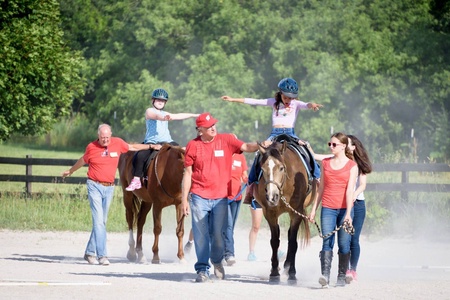Like most psychology students, I really wanted to do an internship over the summer. Unlike perhaps a lot of students, I wasn’t looking to do research. My goal for the summer was to figure out what I wanted to do after graduation. I have always wanted to be in on the action, to be around people; that is why I enrolled in psychology in the first place. However, I realised that getting an internship that would allow me to do that was not going to be easy; these opportunities are rarely posted online. Instead I took matters into my own hands and began reaching out to my personal network (I can highly recommend creating a LinkedIn profile if you have not already done so). After several emails and phone calls I had booked my flights for my summer internship location: Milwaukee, USA!
My internship is probably a little atypical, in that it has allowed me to connect with and experience different kinds of practitioners of psychology in different settings.
My very first experience was with Helen, a psychotherapist who specialises in social work and clinical social work, helping clients with anxiety, depression, addictions, grief and much more. Helen uses a range of methods including gestalt, art therapy and groups, but most typically she will use cognitive-behavioural therapy. Helen taught me about her methods and shared some of the challenges she has faced throughout her career. One of which stood out to me. Helen specialises in sex addictions and because of this, when she first started practicing, she was shunned by the neighbourhood and eventually ended up moving her practice to where it is today. My experience with Helen made me realise that there is still social stigma attached to mental health, more so than I was aware of. Despite this, Helen never stopped practicing and her courage and passion for helping others was truly inspirational.
Next up, I went to see Mary, a psychotherapist at Family Service – Southeast Wisconsin, who works with children; quite a contrast to my initial experience. Mary uses engaging and powerful methods for treating a range of things including anxiety, trauma, sexual abuse and other family circumstances. She mostly uses non-directive play therapy and her office is full of different toys! One of the objects that especially caught my attention was a big sand tray with lots of miniature objects. Mary uses this sand tray to do sand tray therapy. The sand tray allows for the child to create a safe place and to help understand and define for themselves the concept of safety as well as have the child create what safety means to them. She also told me of a new method she is using; eye movement desensitisation and reprocessing therapy (EMDR), a method that is an effective treatment to post-traumatic stress disorder and trauma. It is a treatment that uses eye movements, sounds or pulsations to stimulate the brain. One of the most fascinating things about EMDR is that is can help your client overcome their symptoms using these sensory stimulations while they focus on a traumatic memory to create changes in the brain. Mary is super passionate and most definitely an inspiration for me to pursue my dreams. Mary also created a case study of a potential incoming child along with all the paperwork that has to be filled out, including setting treatment goals and outcome measures – a daunting, but ultimately giving experience that has given me great insight into the scope of her work.
In addition to her job at Family Service, Mary volunteers for LifeStriders, a therapeutic riding centre, and she asked if I wanted to come along to do horseback riding therapy with her.
I don’t know a lot about horses, so I was a bit nervous about how it was going to pan out. Fortunately for me, I was met by the sweetest staff and soon enough I found myself walking the trails outside with a horse by my side and a team of volunteers guiding and incorporating different elements to address the needs of the client on the horse. I was baffled – I loved it and even better, so did the clients. It was an awe-inspiring experience and it warmed my heart to see such a big community effort to help those in need. Besides therapeutic riding, LifeStriders offers counselling and social skills groups. I got to chat with one of their psychotherapists, who invited me to intern with her for the next two weeks taking an active part in their social skills groups designed for children aged 5–17 with challenges in social communication.
And lastly, to nicely tie the knot to my experience, I got to shadow a therapist at the behavioural health and wellness clinic at AIDS Resource Centre of Wisconsin (ARCW). ARCW does a lot of amazing things for the community. I sat in on sessions with the clients and got to see first-hand how the therapists help people diagnosed with HIV overcome mental health challenges. The hardworking staff at ARCW change lives for the better, I walked out of their clinic with butterflies in my stomach: I’m definitely on the right path and I am excited for what the future has in store for me!
For more information: (LifeStriders) www.lifestriders.org (ARCW) www.arcw.org
Anna is a 4th year student studying for a MA in Psychology


